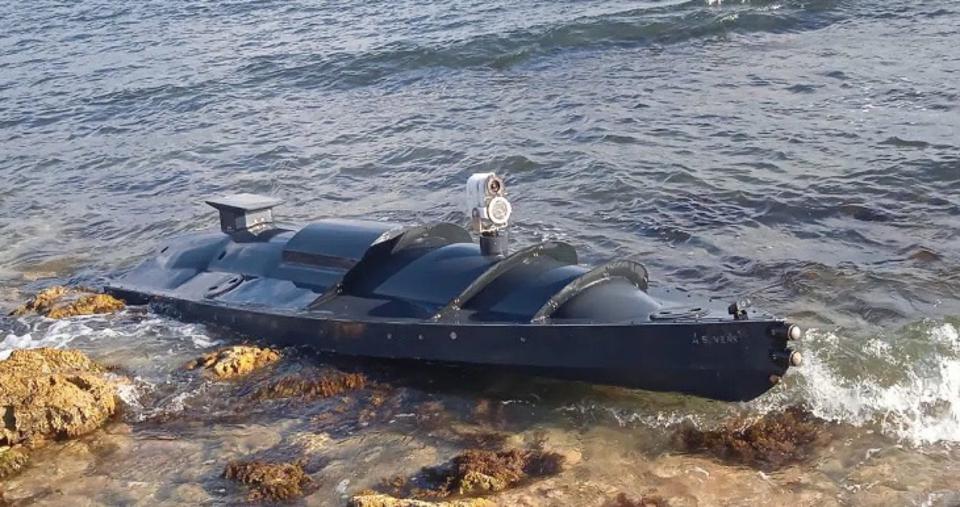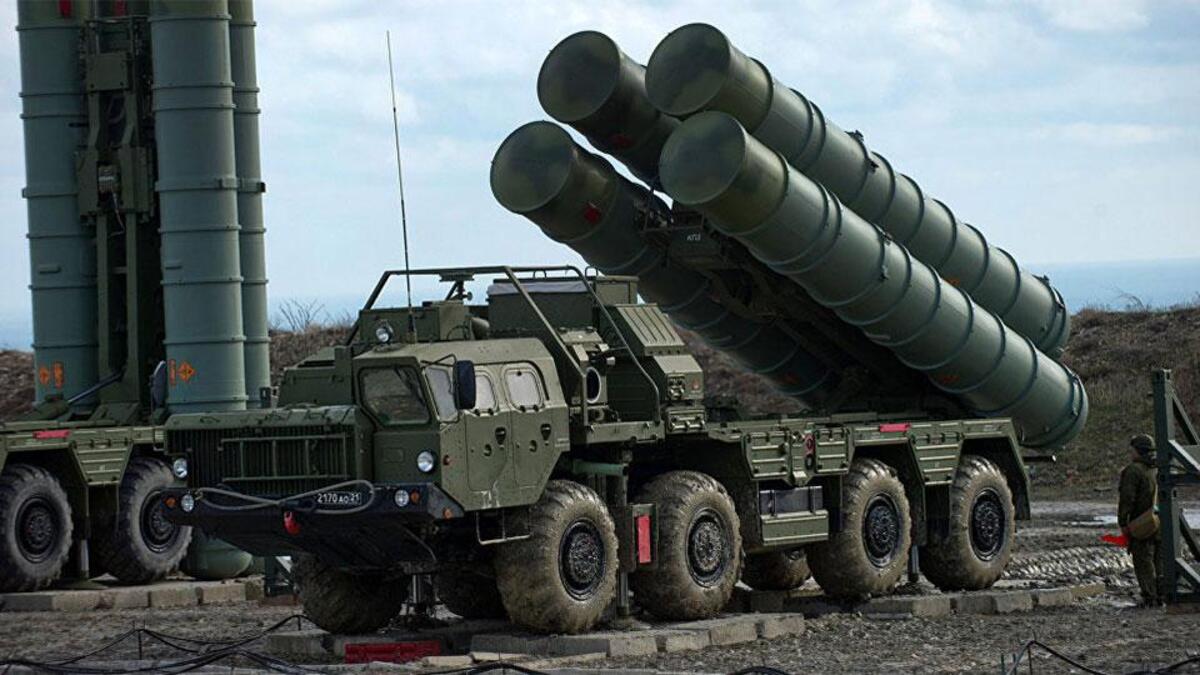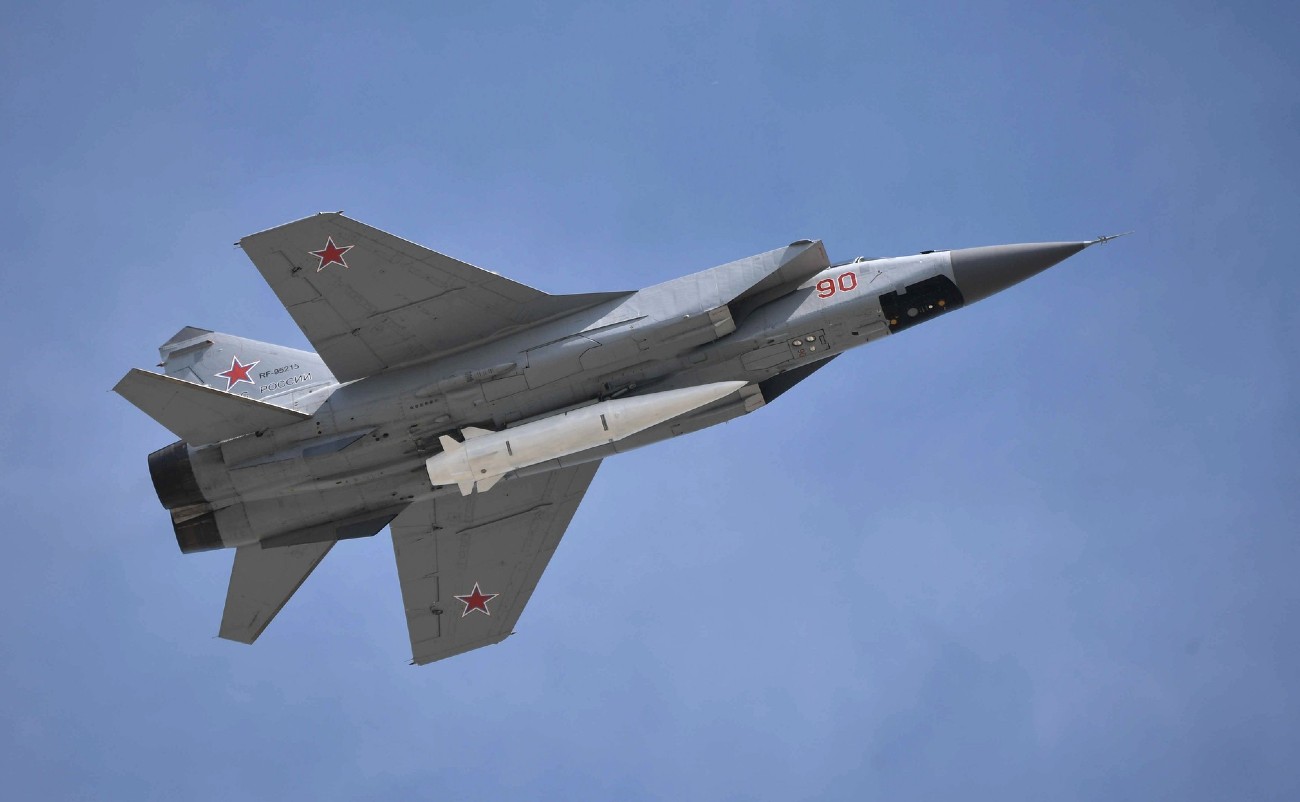Wars bring new weapons and battlefield platforms that can change future warfare. The Ukraine-Russia war is no different. Fighting a much larger and well-equipped Russian force, Ukraine has tested and proven the use of many low-value technologies on the battlefield.
China ‘Shoots Down’ Suicide Drones Attacking Its AWACS Aircraft As PLA Learns From Ukraine-Russia War
The term “Swarm of Drones” has become ubiquitous since the Russian invasion of Ukraine in 2022. While the war in Ukraine is not exactly “the first drone war,” it certainly is a war where drones have been used in large numbers in a military confrontation.
A Royal United Services Institute (RUSI) report underscores the extent of drone usage by estimating that Ukraine is losing 10,000 drones per month, or 300 per day. The massive numbers have been unprecedented in the history of military conflict.
By comparison, the French army currently has over 3,000 unmanned aerial vehicles (UAV) in its arsenal, all models combined (from the 20-gram Black Hornet nano drone to the 2-tonne Reaper tactical drone).
Using unmanned aerial vehicles has its advantage as aerial defense systems can mostly neutralize only manned aviation. The war has made Ukraine an essential hub for developing and manufacturing military-grade drones.
The pressure of war also forced Ukrainians to innovatively repurpose drones for military use. Once the war ends, Ukraine can export unmanned systems that are combat-proven.
The size of drones is increasingly becoming smaller, which comes with high maneuverability, making them invulnerable to GPS jamming. Even the well-defended Moscow city is not impregnable to Ukrainian drones, even as Kyiv repeatedly denies any hand behind these attacks. But, it demonstrates Ukraine’s capability to bring war to the ordinary Russians.
Drones have made the battlefield transparent, decreasing the time from “Detection to destruction.” The unmanned system has increased the precision of strikes. Drones have democratized combat as one doesn’t need a government’s wherewithal to operate drones.
Another remarkable aspect of drone warfare in Ukraine is the large number of civilian drones. The majority of drones used by Ukrainian forces were designed for commercial purposes.
They are usually not built to evade aerial defenses as they fly low and slowly, and a single hit is often enough to bring them down. But it is challenging to combat drones because one needs to have the suitable drone defense systems in the right place, at the right time, “while not spending significantly more money on fighting a drone than the drone is worth.”
In the coming days, countering drones will be a multi-billion dollar business.
Fighting Beneath Waterline
Before the Russia-Ukraine war erupted, the drones were only airborne systems. But Ukraine’s drone boats and unmanned underwater systems have kept the Russian Black Sea Fleet out of the equation.
Despite having no navy, Ukraine has managed to take out five warships of the Russian Navy, including a Kilo-class submarine. Drone boats were used in October 2022, most notably in the attack on Russia’s Black Sea Fleet in Sevastopol. More recently, Ukrainian forces damaged a Russian amphibious landing ship and struck a Russian fuel tanker using naval drones.
Ukraine has a self-developed UUV Marichka. Once Marichka gains operational capability, it will be used in suicide operations against the Russian Black Sea Fleet and other critical Russian infrastructures and establishments.

Underwater drones are even more dangerous to Russian Black Sea Fleet assets because the Russian surveillance system cannot detect them. While it is unknown how much explosive Marichka can deliver to the target. Given the drone’s size, it can be assumed to carry many explosives on board.
“UUVs are multi-role platforms and are the future of underwater ‘drone’ warfare. The stealth they provide is unmatched as these are difficult to detect. Their ‘saw tooth’ travel path with buoyancy make them autonomous undetectable platforms, guidance to reach a particular underwater position can be built into them using satellite signals,” C4I technology and Multiplatform Multi-Sensor data Fusion expert Commander (retired) Milind Kulshrestha told the EurAsian Times.
The surface drones have proved difficult to kill despite Russia having developed some measures against kamikaze USVs. Still, the recent attacks on the Russian landing ship and logistics tanker proved insufficient measures to ensure Russian assets’ security. Marichka, moreover, will hit the ships on the submerged parts, making it harder to do damage control.
A swarm of underwater drones will be very difficult to defend against. As the war lingers on, the effectiveness of Marichka will be tested.
Death By Electronic Waves
Electronic/Electromagnetic Warfare makes the battlefield invisible, and a subversion of the EW system can make a force blind.
Fighting against technologically inferior adversaries, like Iraq and the Taliban, electronic warfare (EW) had become a forgotten discipline for the Western armed forces. However, the Ukraine War has brought EW back into the limelight.
War reveals more about your enemies than peacetime. Hence, war is the best time to learn and evolve your Electronic Warfare complexes.
In November 2022, Russia rapidly introduced a lightweight drone-based system called the ‘Moskit ‘/’ Moskito’/’ Mosquito,’ derived from the Orlan-10 unmanned aerial vehicle (UAV) and has claimed to have successfully jammed Ukrainian communications. This underlines Russian capability to quickly imbibe lessons from the battlefield and improve weapons technology at a hurried pace.
“The significance of the electronic, magnetic spectrum is so much that a military can be crippled by attacking its EW capabilities,” an Indian military official told the EurAsian Times. The most commonly used electronic warfare techniques are jamming (electronic countermeasures or ECM) and eavesdropping on enemy communications (SIGINT or signals intelligence gathering).
Jamming restricts the enemy’s ability to exchange information by overriding radio transmissions or sending signals to prevent radar detection or convey false information.
The ECM can be countered through Electronic Counter-Counter Measures. The most common method is frequency hopping spread spectrum, whereby frequency channels are switched according to a prescribed pattern known only to the transmitter and the receiver. The SIGINT is handling recognizing and avoiding a threat and targeting and homing.
The Ukrainian Man Portable Air Defense Systems (MANPADS) made the Russian helicopters sitting ducks. But then the Russians armed its Kamov Ka-52 with the Vitebsk-25 air defense system. It demonstrated capability by taking on as many as 18 MANPADS by jamming their frequency, completed its mission, and returned to the base unscathed.
The Vitebsk-25 detects launches by scanning the area with radar, laser warning receivers, and IR & UV sensors and warns the crew about them. After this, it offers passive protection to the aircraft by dispensing chaffs and flares to confuse and disable the missiles.
But its active defense involves directly engaging the thermal homing systems of the “heat-seeker” missiles and deceiving them. The Vitebsk-25 puts powerful jamming on the warhead of radar-guided targets and thus forces the “heat-seekers” toward the decoy targets.
Surface-To-Air Missiles Ruling The Skies
In March 2022, the Russian Air Force lost the ability to operate in Ukrainian-controlled airspace except at very low altitudes due to its inability to reliably suppress or destroy increasingly impactful, well-dispersed, and mobile Ukrainian surface-to-air missile (SAM) systems.

The Russian Ground Based Air Defense (GBAD) has been highly effective since March, especially the long-range S-400 SAM system supported by the 48Ya6 ‘Podlet-K1’ all-altitude long-range surveillance radar system.
Without air superiority, Russia’s attempts at strategic air attack have been limited to expensive cruise and ballistic missile barrages at a much more limited scale. These failed to achieve strategically decisive damage during the first seven months of the invasion.
A research paper by Justin Bronk, an air-warfare specialist with the Royal United Service Institute (RUSI) think-tank in Britain, said: “The effective employment of these systems by Ukrainian forces has denied Russia air superiority over Ukraine and continues to force the VKS (Russian Aerospace Forces) to operate very cautiously near the front lines. Despite the overall mismatch in force ratios in favor of the VKS in the air domain and the Russian ground forces on land, the scale of the SEAD/DEAD challenge for the VKS is significant.”
Ukraine’s ground-based SA-11, SA-8, and S-300 SAMs forced Russian aircraft to fly low inside the shoulder-fired man-portable air defense systems (MANPADS) threat envelope, allowing Ukraine to deny its skies to Russian fighter jets.
Lethal Weapon: Thy Name Is Hypersonic
Post Ukraine-Russian War, the word ‘hypersonic’ entered the common parlance like never before. The legend of the Russian hypersonic long-range Kh-47 Kinzhal missile or ‘Dagger’ has long evoked fear and admiration among the country’s adversaries. The war saw the use of these weapons.
Russians claimed it to be a “super weapon” elusive to enemy radars, and the US rejoiced in shooting down its first Kinzhal. Fired by MiG-31, the Kinzhal could reach speeds greater than Mach 10 and travel 1,500 to 2,000 kilometers while carrying a conventional or nuclear payload.

Experts debate the designation of the Kinzhal missile as a ‘hypersonic’ missile as “misleading,” as almost all ballistic missiles attain hypersonic speeds at some point during their flight. Nobody doubted its potency.
The Kinzhal missile, with NATO name “Killjoy,” is so fast that the air pressure in front of the weapon forms a plasma cloud as it moves, absorbing radio waves. This makes the hypersonic weapons very hard to catch on radar systems.
Also, Kinzhal can be maneuvered to the intended target, unlike other hypersonic missiles. That is why they are already near their target when ground-based radar systems spot them. The Kinzhals can be launched from MiG-31K fighter jets, giving it the advantage of being launched from any direction.
The world sees hypersonic weapons offering advantages over longer ranges. In the face of mid-course ballistic missile defense capabilities, there is continued and growing interest in the development and acquisition of hypersonic systems, in particular missiles such as Hypersonic Glide Vehicles (HGVs) or Hypersonic Cruise Missiles (HCMs) and air vehicles, which include the American Hermeus’ Darkhorse, the Canadian Space Engine Systems’ Hello-1X, and the Chinese MD-22.
The war pushed the technological chasm, staring the US and Russia in the face regarding China’s development of hypersonic weapons. China may arguably be the world leader in hypersonic capabilities, with at least two additional hypersonic weapons emerging in the past 12 months, the DF-27 and an air-launched variant of the YJ-21, respectively, even as the United States and Russia are playing catch-up with the Asian giant.
- Ritu Sharma has been a journalist for over a decade, writing on defense, foreign affairs, and nuclear technology.
- She can be reached at ritu.sharma (at) mail.com
- Follow EurAsian Times on Google News




